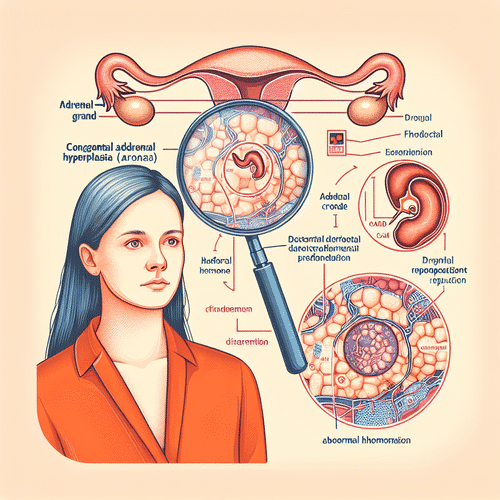What is Congenital Adrenal Hyperplasia (CAH)?
Congenital Adrenal Hyperplasia (CAH) is a group of genetic disorders that affect the adrenal glands, which are responsible for producing essential hormones such as cortisol and aldosterone. CAH is characterized by a deficiency in the enzymes needed to produce these hormones, leading to an imbalance in the body’s hormone levels. This imbalance can have a significant impact on various bodily functions and overall health.
Types of Congenital Adrenal Hyperplasia
There are several types of CAH, with the most common being 21-hydroxylase deficiency. This type accounts for the majority of CAH cases and is classified into two forms: classic and non-classic. Classic CAH is more severe and typically presents in infancy, while non-classic CAH may not manifest until later in life. Other types of CAH include 11-beta-hydroxylase deficiency and 3-beta-hydroxysteroid dehydrogenase deficiency, each with its unique characteristics and effects on hormone production.
Causes of Congenital Adrenal Hyperplasia
CAH is caused by genetic mutations that affect the enzymes involved in hormone production in the adrenal glands. These mutations are usually inherited from parents who carry the faulty genes. In some cases, CAH may also result from spontaneous genetic mutations. The severity of the condition can vary depending on the specific gene mutations and their impact on hormone synthesis.
Symptoms of Congenital Adrenal Hyperplasia
The symptoms of CAH can vary depending on the type and severity of the condition. Common symptoms include abnormal genitalia in females, early puberty, excessive hair growth, and salt-wasting. In severe cases, CAH can lead to adrenal crisis, a life-threatening condition characterized by a sudden drop in hormone levels. Early recognition of symptoms is crucial for timely diagnosis and management of CAH.
Diagnosis and Treatment of Congenital Adrenal Hyperplasia
Diagnosing CAH typically involves hormone testing, genetic testing, and imaging studies to assess adrenal gland function and identify any abnormalities. Treatment for CAH aims to replace deficient hormones, regulate hormone levels, and manage symptoms. This may involve lifelong hormone replacement therapy, dietary modifications, and regular monitoring to prevent complications and optimize health outcomes.
Living with Congenital Adrenal Hyperplasia
Living with CAH can pose challenges in daily life, including the need for regular medical monitoring, adherence to treatment regimens, and coping with the emotional impact of a chronic condition. Individuals with CAH may also face social stigma and misconceptions due to visible symptoms such as abnormal genitalia or excessive hair growth. Support from healthcare providers, family, and community resources is essential for managing the physical and emotional aspects of living with CAH.
Conclusion
Congenital Adrenal Hyperplasia is a complex genetic disorder that requires a multidisciplinary approach to diagnosis and management. By raising awareness about CAH and its impact on individuals’ lives, we can promote early detection, effective treatment, and improved quality of life for those affected by this condition. Through ongoing research and advocacy, we can strive to enhance the understanding and support available to individuals with CAH, empowering them to navigate the challenges and opportunities that come with living with a rare genetic disorder.

